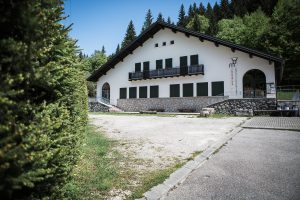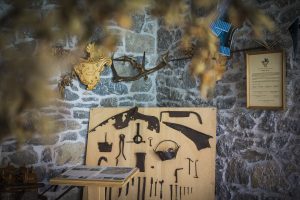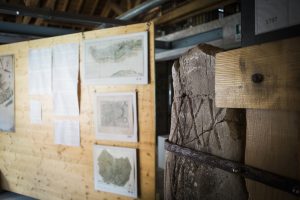
from Prehistoric times to the Cimbri culture
The Museum
The MUC is owned by Veneto Agricoltura and is a collection of documents and evidence of man in Cansiglio and his relationship with the Plateau, starting from Prehistoric times.
The ground floor has exhibits of activities and sites which tell the story of the prehistoric settlements of nomadic hunters. A section is dedicated to paleobotany and finds from Palughetto (near Pian Cansiglio) including remains of the oldest conifers in Europe. Browse through the fascinating collection of historical documents relating to Venetian domination which lasted almost four centuries (1420-1797) and the presence of the Cimbri culture, an ethno-linguistic minority group.
There are educational panels about forest activities, the preparation of coal and woodworking. There are many tools on display that were used for the transformation of the magnificent beech trees of the Cansiglio Forest into the famous oars used to pilot the grand Venetian galleys, huge boats feared by fleets which sailed the Mediterranean.
Discover the history of the life and arrival of the Cimbrian community to Cansiglio in the late eighteenth century from Roana (Asiago Plateau, VI). This story is told through historical images of the villages, the faces of the "Cimbri Scatoleri", the tools used in the past and today for woodworking, and some utensils produced by these people, such as the famous "scatoi" - circular containers for the storage of cheese and food. Walk through the exhibition rooms and with the help of bilingual captions discover Cimbrian, a German dialect, still spoken by some Cimbri to this day.
Watch some movies that bring to life the history of this German-speaking population, and uncover the secrets of the magnificent Cansiglio Forest inhabited by many animals, such as deer. The Museum attic houses a library dedicated to the Cimbrian population and managed by the Cimbrian Cultural Association of the Cansiglio
Orari
June to September
Wednesdays to Fridays 2-6pm, Saturdays, Sundays & August 15th Holiday 10am-12:30pm & 2-6pm
Info
Pian Osteria, Cansiglio, Tambre Admission: free under 15 years, disabled (L.104/92) and companion; € 1 15-18 years & groups over 10 young people; € 2 adult group with at least 10 people; € 3 adults. Free admission during the first weekend of August for the Feast of Saint Osvaldo
Contact
0438 581 757 (Veneto Agricoltura) 0437 472095 (Ass. cult. Cimbri del Cansiglio) Sito Web Veneto Agricoltura














